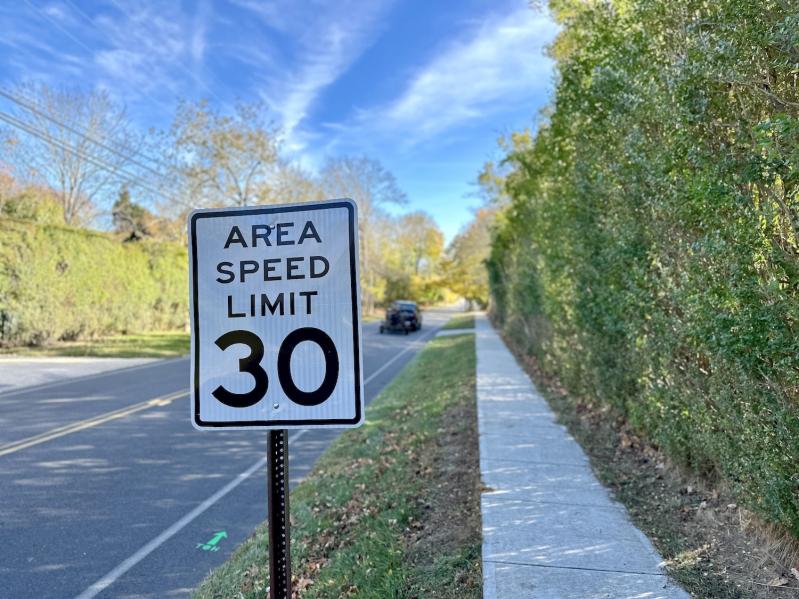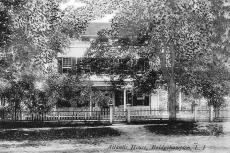East Hampton has over 300 miles of roads, and his officers write about 5,000 traffic summonses a year, Town Police Chief Michael Sarlo told the town board this week as he once again urged its members to ask permission from New York State to lower speed limits in several places. “The enforcement is there, to the extent it can be without having officers sit on your road all day,” he said.
Since September, the board has worked with Chief Sarlo to identify roads where speeds could be lowered. Speeding is the leading cause of vehicle crashes in the town, said the chief, and lowering the limits gives drivers more time to react to avoid them. “We can’t tell the state we want over 300 miles of roadway to be 25 miles per hour,” said Chief Sarlo. “They’re not going to consider the request. There’s accident data and there’s a reason why there’s a 30-miles-per-hour standard speed limit throughout the state for town roadways. We have to be reasonable about how we ask for changes.”
On Tuesday, the board added two criteria to three it had discussed in September. Now, roads near schools, houses of worship, or other places where people gather, and roads that are exceptionally hilly or curvy with poor sight lines, will be on the list.
Applying the three criteria from September gave the board a list of over 20 roads to send to the state for consideration. Only one additional road was identified using the new criteria, Old Montauk Highway in Montauk, which is both hilly and curvy. That road, however, will not be included in this phase of road requests.
The roads on the list include, but are not limited to, Main Street in Wainscott; Cooper and Osborne Lanes, and several nearby streets, in East Hampton; Atlantic Avenue, Indian Wells Highway, and roads throughout BeachHampton in Amagansett.
“It has to be a slow roll-out,” Chief Sarlo explained. “We don’t want to overwhelm them with dozens and dozens of roads to consider. This must be a phased approach.”
The town board cannot lower speed limits on its own. A law signed by Gov. Kathy Hochul in 2022 did allow municipalities to lower limits from 30 m.p.h. to 25, but only towns with populations over 50,000 can do so without state review.
Towns with fewer residents must first identify the roads and then vote to ask for state review of the proposed changes. The request then goes to the Suffolk County Highway Superintendent for review, and then on to the State Department of Transportation. If the D.O.T. agrees, the town board must hold a public hearing before changing the state-approved limits on the identified roads.
“I think the criteria for these roads are solid and sound as a first go-round. I like the procedural steps as well,” said Councilwoman Cate Rogers. “I’ve heard folks say, ‘Make every town road 25 miles per hour,’ but I don’t think there is a sound mechanism, or if that’s logical. We always try to base decisions on responding to issues and also using a systematic approach.”
Chief Sarlo did say that traffic accidents here have leveled off. At the peak a few years ago there were over 1,000 annually, he said, but now there are just over 800. In an aside, he stressed that people must take accountability for their own safety when walking or biking.
Loring Bolger of the Springs Citizens Advisory Committee applauded the move to lower speed limits, donning a yellow reflective vest that she recommended pedestrians and joggers wear. “People in cars don’t seem to understand that pedestrians have an equal right to use the roadways, and they speed terribly and they’re on their phones,” she said. Pedestrians, at the same time, “seem oblivious to the fact that they’re not seen by cars.”
“We’re not going to ask the state for too much, and we’ll see what we get back,” said Chief Sarlo. “We’ll see how they go about evaluating roads, and it will help us move forward with expanding. I know we will have some people saying, I wish my road was included, but I think this is a reasonable initial request.”
Supervisor Kathee Burke-Gonzalez asked Robert Connelly, the town attorney, to have a resolution ready for the board’s Nov. 21 meeting, with the roads listed.




